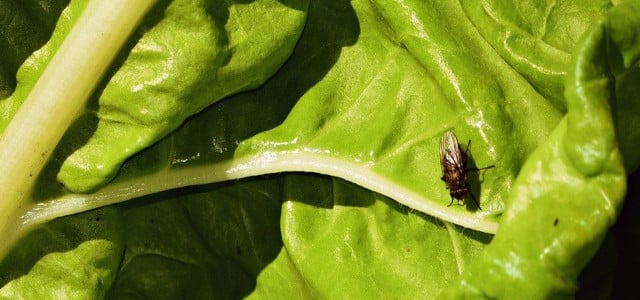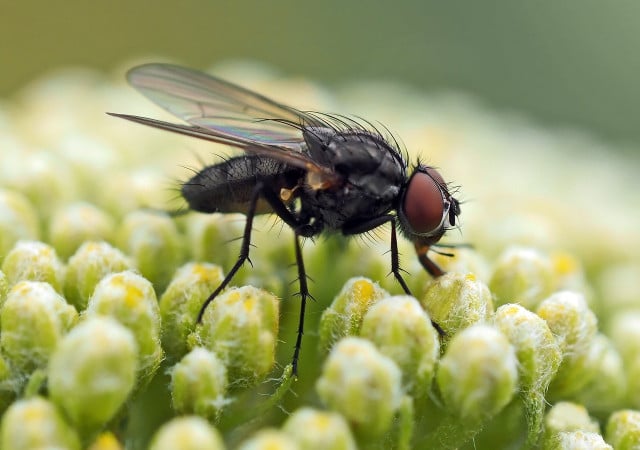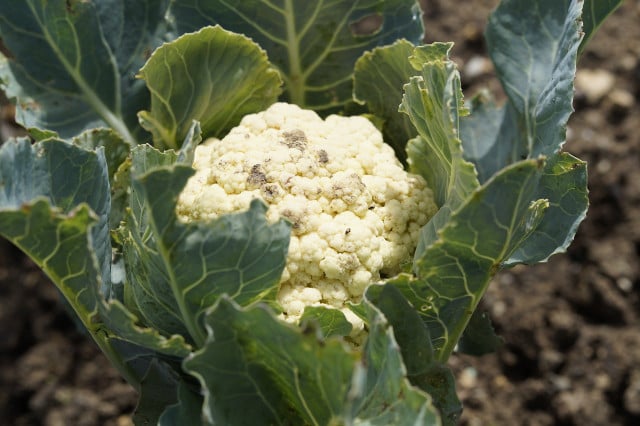
Almost no type of cabbage is safe from cabbage flies. In this article we explain how you can fight the pests with natural means to save your cabbage crop.
Cabbage flies look like ordinary houseflies, but they can cause much more damage. As their name suggests, cabbage flies and their larvae prefer to feed on cabbage plants. That’s why you’ll find these pests most often in vegetable beds. Cauliflower is particularly susceptible to infestation. The greatest danger comes from the larvae of cabbage flies.
Contents
Cabbage flies: How to recognize them

Botanically, cabbage flies can be divided into two species, namely the small and the large cabbage fly. The biggest difference between the two species is the time when the larvae of the flies become active. The larvae of the small cabbage fly are most abundant in spring and late summer, while the larvae of the large cabbage fly are more abundant in early summer. In their other behavior and appearance, the two species are very similar, making it easier for you to identify them.
Adult cabbage flies:
At the end of May, the adult cabbage fly ends its hibernation. From now on, it searches for suitable plants for its larvae. Preferably, the cabbage fly lays its up to 100 eggs at the base of cabbage plants.
Also known as root flies, they grow up to five millimeters long and resemble small houseflies.
Unlike larvae, adult cabbage flies feed on the nectar of early-flowering wild herbs such as meadow chervil.
Cabbage fly larvae:
The elongated, white eggs of the cabbage fly grow no larger than one millimeter and lie hidden in the soil. Some time after the eggs are laid, the larvae eventually hatch.
The larvae of the cabbage fly are nine millimeter small, headless and legless maggots that first eat through the roots of the host plant. Only the second and third generations of larvae then feed on the cabbage leaves.
Two to three weeks after hatching, the larvae pupate in the soil.
Recognize an infestation of cabbage flies

When the leaves of your cabbage plants begin to wilt in early May, the plants are most likely infested with cabbage flies. Because their larvae eat the roots, you can also pull affected plants out of the ground particularly easily. Over time, the leaves slowly turn gray-brown. To be on the safe side, you can also dig up the plants to look at their roots. If the roots are hollow and eaten away and the root neck is damaged, you have an infestation of cabbage flies.
In radishes and radish, cabbage fly larvae dig small brownish tunnels. You can recognize an infestation of cauliflower by the fact that the first thing to wilt is the outer leaves. In Brussels sprouts, cabbage flies like to eat the lower florets.
How to prevent an infestation of cabbage flies

Once your plants are infested with cabbage flies, it’s hard to save them completely. That’s why you should take preventive measures early on to protect your crop from the pests:
- Crop protection nets: One of the safest ways to keep cabbage flies away is to use crop protection nets. You place these close-meshed nets over your vegetable patch immediately after sowing and leave them on your plants until harvest to protect them from the pests. The disadvantage here is that these nets are mainly made of materials such as plastic.
- Mixed crops: The intense smell of tomatoes and celery is said to be a deterrent to cabbage flies. If you plant your cabbage in a mixed culture with these plants, you reduce the risk of infestation by the pests. In another article, you’ll learn how to preplant tomatoes.
- Protective litter and mulch: You can also protect the delicate root neck of your cabbage by spreading a layer of wood ash around the plant. You can also mulch the soil with a thin layer of fern foliage to protect it from cabbage fly larvae.
- Cabbage collars: with some types of cabbage, you can prevent cabbage flies from laying eggs by using cabbage collars. Best of all, you can easily make these cabbage collars yourself. All you need is some felt, which should be at least one centimeter thick.
Here’s how you make cabbage collars to keep cabbage flies at bay:
- Cut out slices from the felt with a diameter of about 15 to 20 centimeters.
- Now cut each slice once from the edge to the center, so that you can later place it around the sensitive root neck.
- If you make short crosswise incisions in the center of the slice, the collar will fit the plant especially well, protecting it from cabbage fly eggs.
- Leave the cabbage collars on the plants until harvest. After that, you can remove them and compost them.
Fighting cabbage flies: Please without chemicals!
If you want to prevent your cabbage crop from being destroyed by cabbage flies, you don’t have to resort to chemical pesticides with questionable ingredients. These pose an additional threat to the environment, as they also harm beneficial insects. Since the larvae of the cabbage fly usually live in feeding channels in the plant, these agents also usually work poorly or not at all. Unfortunately, this makes it very difficult overall to effectively combat a cabbage fly infestation.
However, if you recognize an infestation of cabbage flies, you can at least contain the damage to your cabbage plants with the following steps:
First, check all your cabbage plants for feeding damage. If you discover any, immediately dig up the infested plants over a large area.
Then assess the damage that the larvae have already done to the plants. Then weigh whether it is still worthwhile to collect the larvae from the roots and replant the plant in the ground.
If the roots and stems are already largely dead, it is better to dispose of the plants quickly. This will prevent the pests from spreading further. Do not throw the infested plants on the compost, because the larvae can reproduce there.

